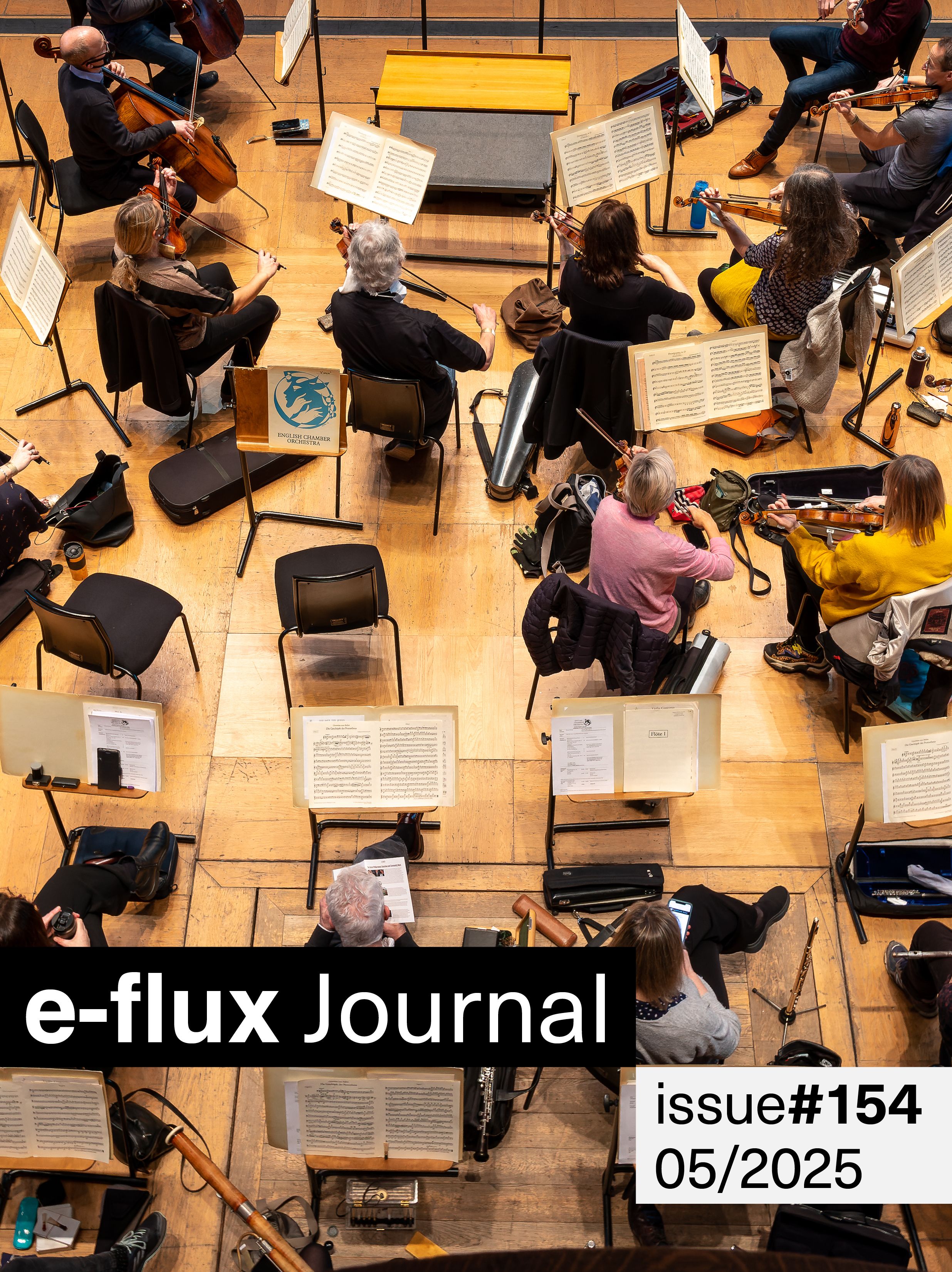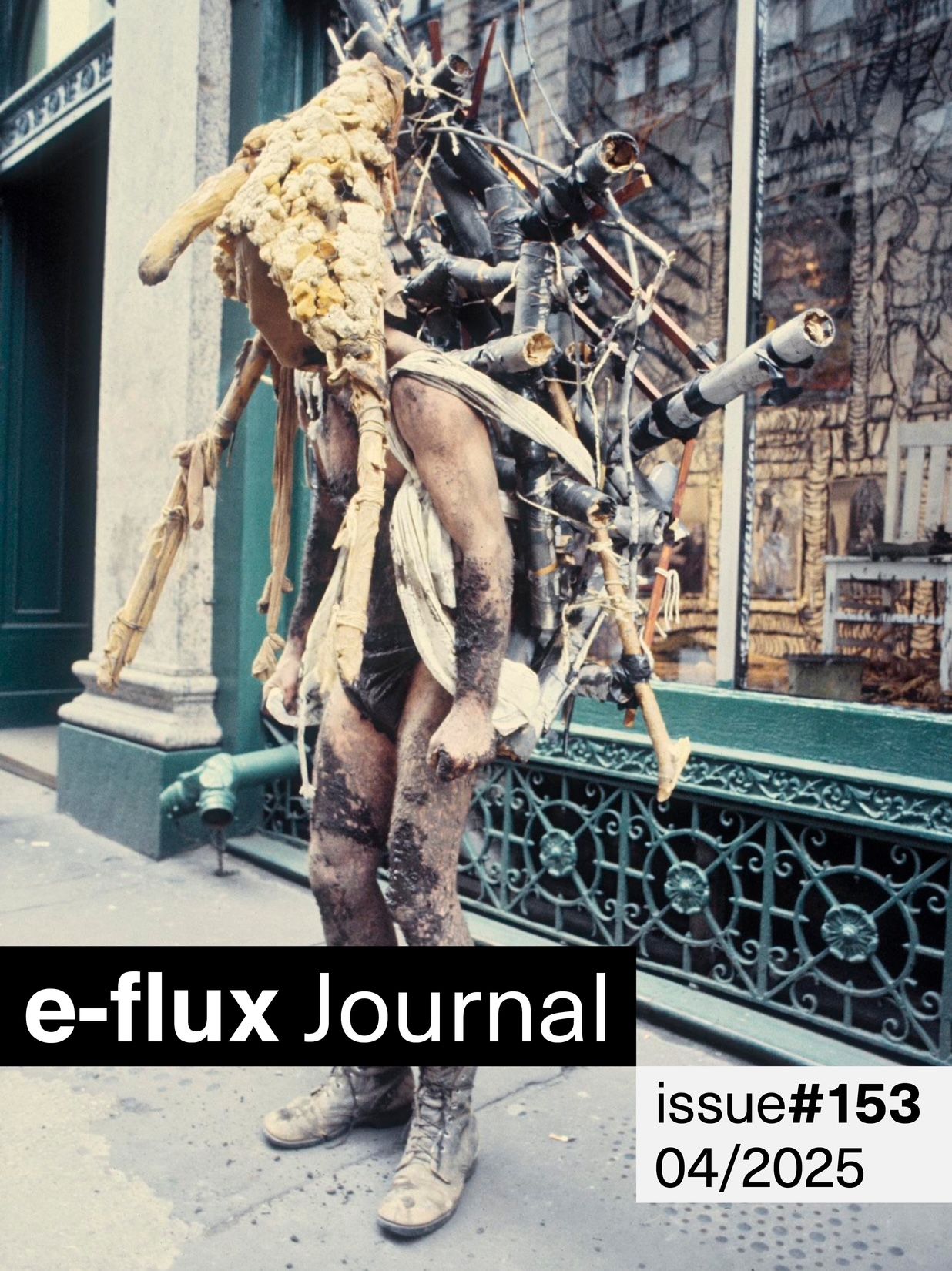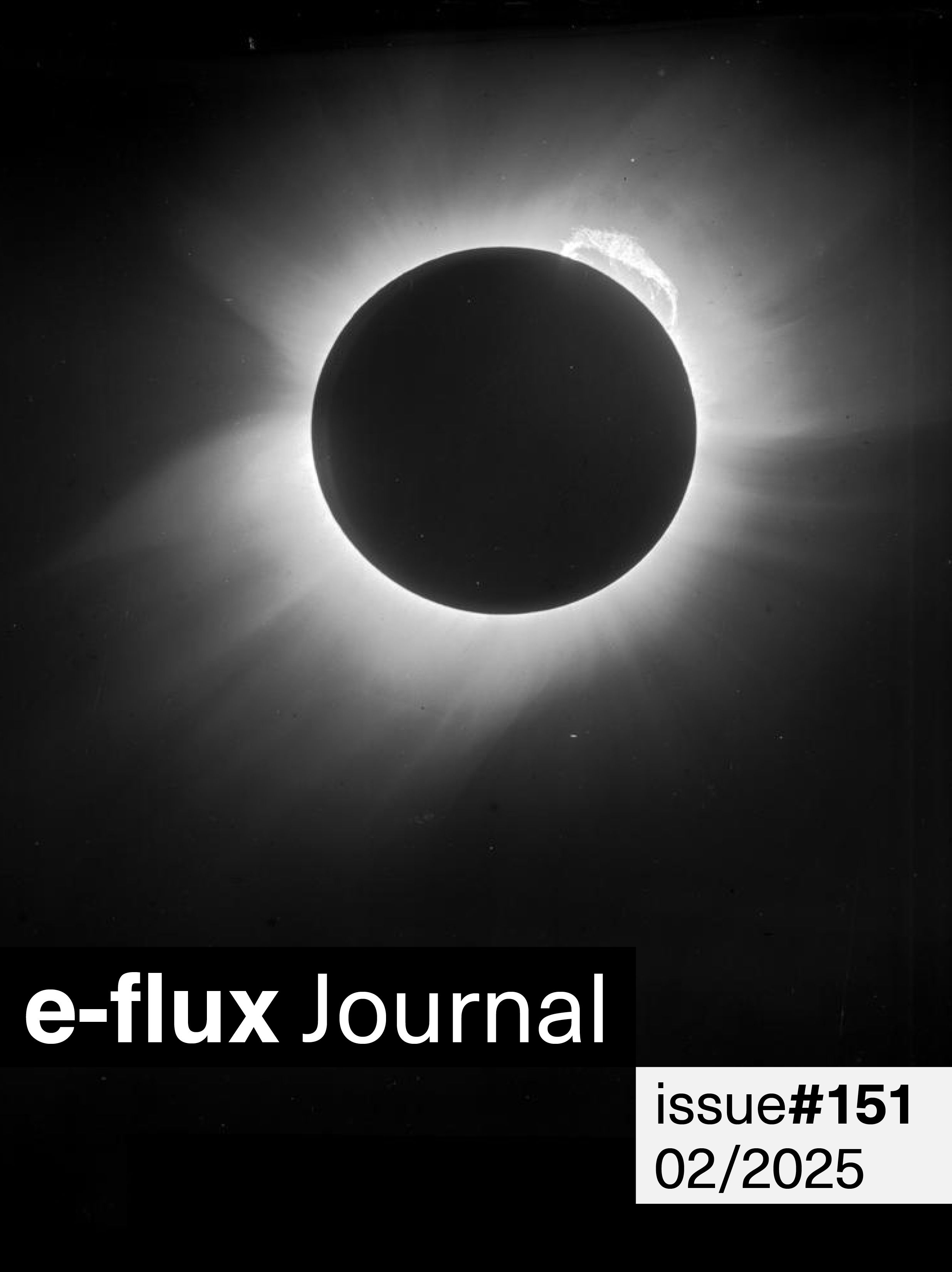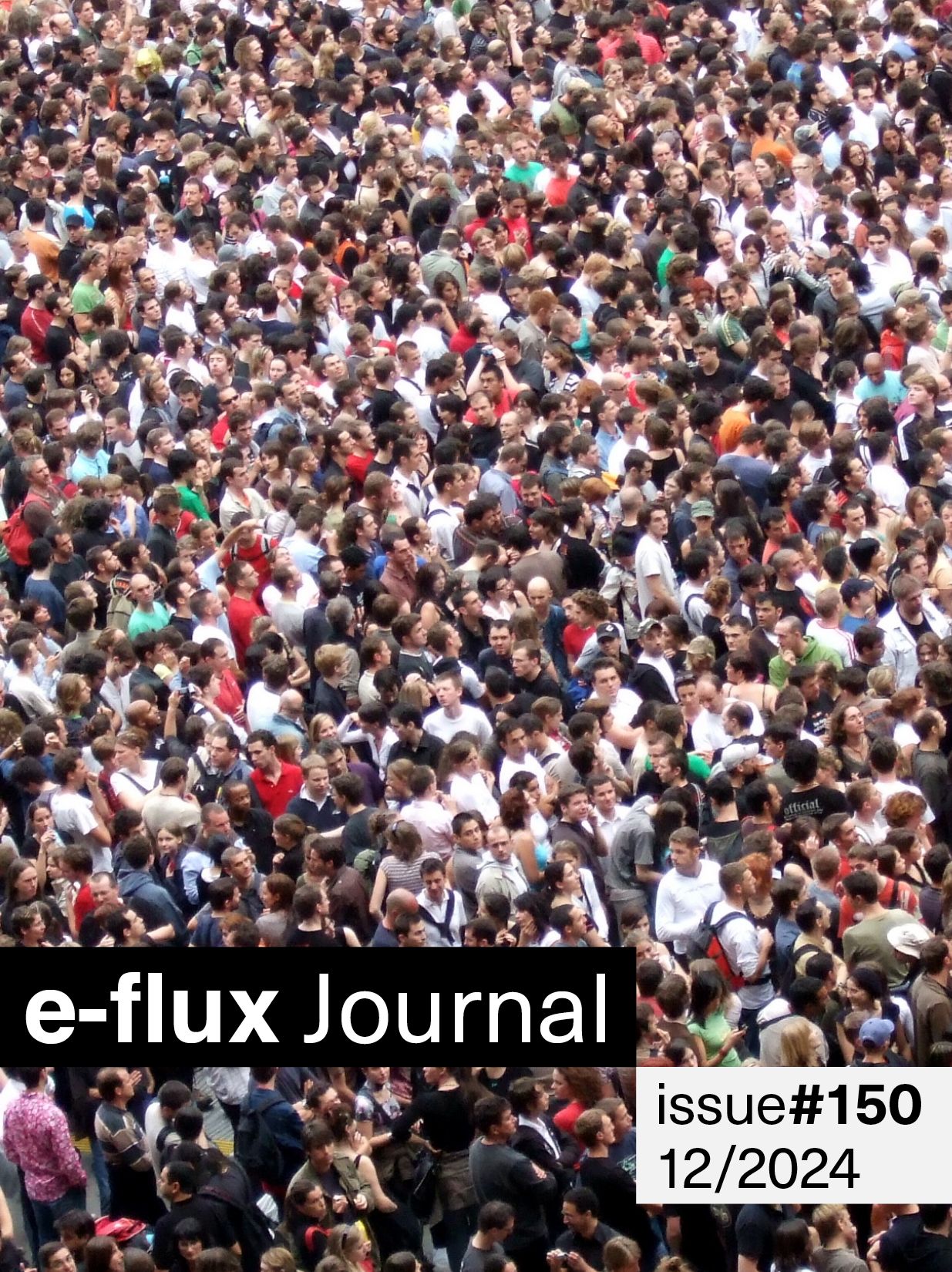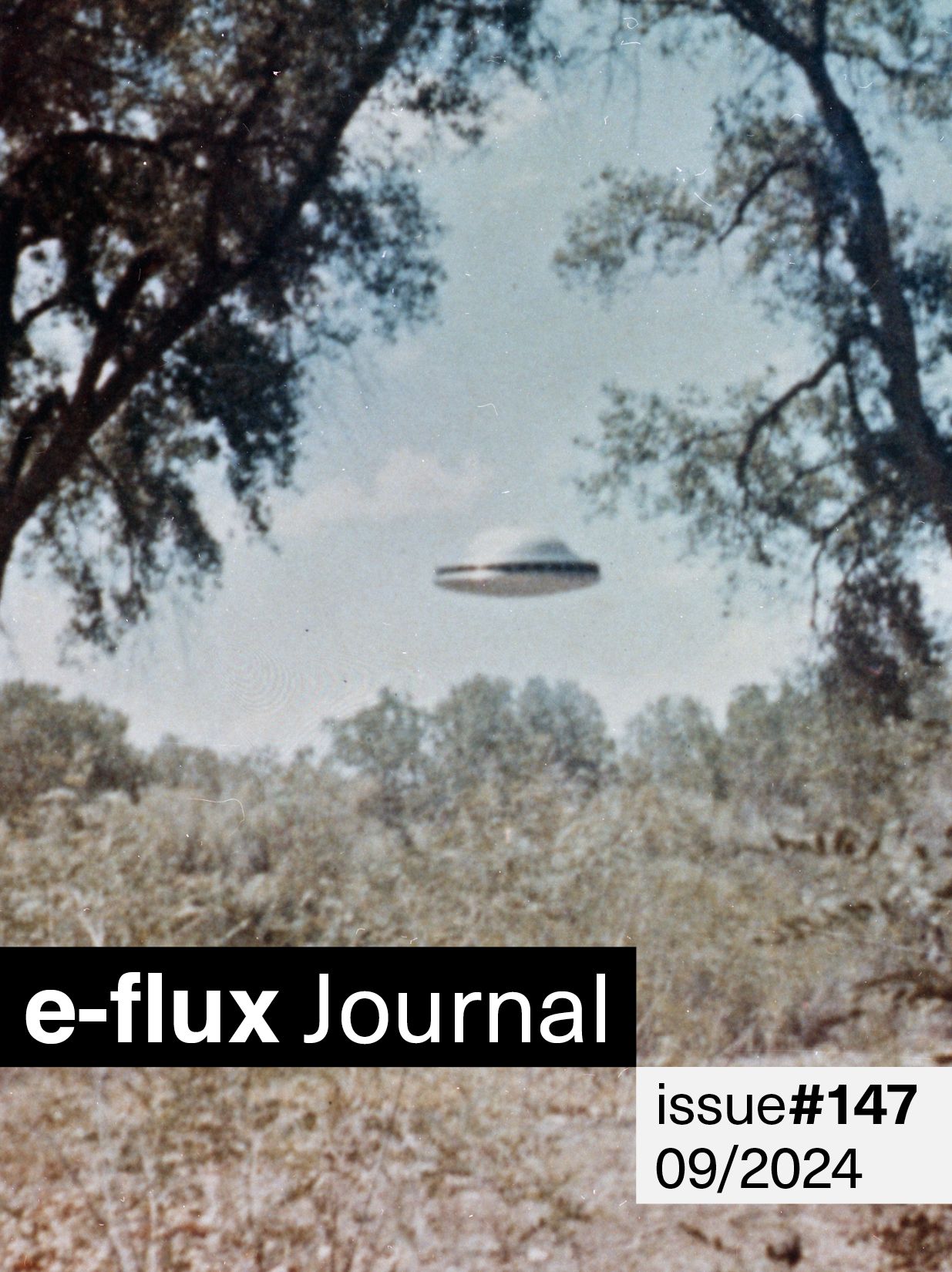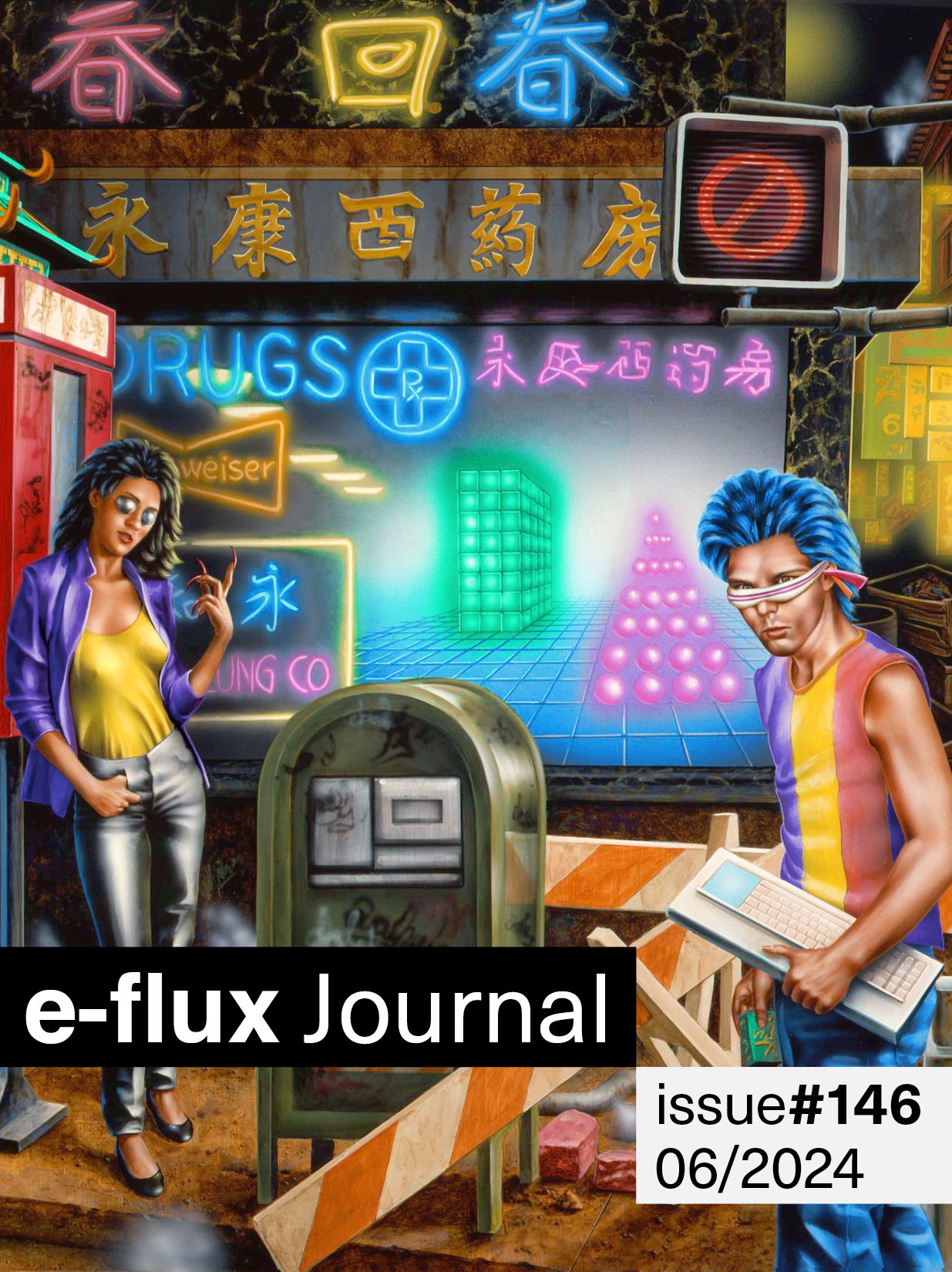e-flux journal issue 91
with Oxana Timofeeva, Andrei Platonov, Georg Lukács, Robert Bird, iLiana Fokianaki, Michael Baers, Eva Díaz, and Lev Ozerov
A riddle: One night, an arresting officer enters a holding cell full of people. He asks the group what they were doing congregating on the public thoroughfare that morning. Why bring their bodies out from home to stand together on the sidewalk, walk together on the street? The officer seeks connection. Somewhere in the cell’s radius a commercial window had been smashed. Somewhere in the cell’s radius was a changing of the guards. Thinking for a moment that they can see each other, one of the arrested persons asks in return, “Well, don’t you think another world is possible?” What happens when the arresting officer says yes?
The possibilities could split a body in two.
No matter the response, this body’s dimensions will always exceed those of the cell.
Now and for centuries, decades, another world has been conceived of by bodies in need of place. After Sun Ra, one possibility, one necessity: space is the place. The place, among other things, for refuge—as Eva Díaz traces in “We Are All Aliens,” an essay in this issue of e-flux journal charting space travel through visual art in the years since Ra touched back down (in Chicago or Birmingham) from Saturn. Among the more recent works on the contemporary art-on-space timeline, Díaz describes Halil Altindere’s installation Space Refugee (2017), invoking Muhammed Faris’s 1987 trip, as a stateless exile: the first Syrian to travel into space. The project, like others before it in the best veins of the sci-fi tradition, envisions “outer space as the ideal sanctuary for homeless and refugee populations.”
Díaz elaborates on Faris: “A Russian-trained cosmonaut who traveled to the Mir space station in 1987, Faris spoke out against the Assad regime and joined the armed opposition in 2011. Eventually, he and his family fled Syria, crossing into Turkey. In the film, Faris describes the discrimination against refugees he and others experience, and reveals his hope that ‘we can build cities for them there in space where there is freedom and dignity, and where there is no tyranny, no injustice.’”
“In contrast,” Díaz continues, “New Spacers like Musk and Bezos treat outer space, ostensibly free of indigenous peoples, as a new frontier exempt from the exploitation that characterized earlier colonial projects. And yet … ”
In the world New Spacers seek to recreate with themselves at the controls, the SpaceX–Guggenheim Mars joint venture becomes inevitable.
To highlight the contrast between these two developing realities, of course, Díaz reminds us that “voluntary, touristic travel remains an experience of privilege; for many around the globe, travel is undertaken in forced and dangerous circumstances.”
In space tourism we may yet see echoes or reflections, satellites of the radiation from years of Terran cultural tourism. Parasitic symbiosis occurs in the art world too. In the body or bodies of current contemporary art, we see by-products of ongoing tourism leaving its internal and external marks, nodes; forced host-guest relations between national bodies.
In a more nuanced reflection, iLiana Fokianaki traces the host-guest nation reversals in Athens last summer, identifying the tactics of “Redistribution via Appropriation” at play in the mega-exhibition and contemporary art industrial complexes. Importantly, too, Fokianaki casts eyes on institutional rhetoric that hurls (self-flagellating) daggers toward the past, but a persistent reality remains in contemporary art’s present: “Institutions, biennials, and mega-exhibitions attack colonial pasts, but not presents. They are quick to be politically correct and ‘host’ the Other—while often maintaining an all-white staff, and a clearly rigidly Western approach as to how to institute.”
Fokianaki considers conditions under which “the Western mandate for the universal—which has corroded our varied and complex cultural histories just as the chemicals corroded the surface of the Parthenon Marbles—might finally collapse.”
Another riddle, in a sense: “As the state wages its undeclared war, it faces the same question as the murderer: What to do with the body?” asks Oxana Timofeeva in “Now is Night.” Of the ongoing, undeclared war in Ukraine, she relays: “There are rumors that some of the white trucks in a Russian humanitarian aid convoy that drove into Ukraine were empty but returned full of cargo 200 (the general name given to both fallen Russian soldiers and the zinc coffins in which they come home from the war). Some bodies come home, others stay on Ukrainian soil, buried on the spot. Some say that the Russian army has bought mobile crematoria: special trucks on a Volvo frame for the quick and safe disposal of biological waste such as the corpses of homeless animals or infected cattle.”
What indeed to do with the body? And, here and elsewhere, do we consider body qua body, body in a body, or a more complex arrangement? Body first as metaphor then as metastatic ideology, a rail linked with others toward a common goal, or tied down as corpse? Body as leftover, as evidence, as person, or machine of the state. What begins to happen to constructions of corpses as seed, gross national product, necessity, possession of a larger, hungry, always threatened and proud growling national body when a body can be—or must be—shipped out, returned in ashes by priority mail or Amazon drone? Certainly we are running out of space.
Certain forces of capital relations lead the pack in producing involuntary movement, involuntary death: war and its continued fallout. Terradeformation: scorched earth, to say the least.
Depending perhaps on location, depending on where in the end of the end-of-the-world process one’s people are or have already been, there too exist psychic preoccupations with catastrophe.
In “A First Step Towards a Regional Risk Assessment,” Michael Baers maps real climate projections considered in Stockholm atop speculative accounts from the same city in 2040. At that time, from these reports back from the future, the bodies on earth face greater external harm, yet lack internal (weather) veins—instead of censors, the weather without invades so as to become the weather within.
Sometimes, we are or have been told, a body needs to embody an idea, moving it with hands, tools, weapons, or words along with others in order to construct a reality.
Looking back into a Soviet past, Robert Bird traces in this issue an as-yet-unmapped history of three possible lived concepts of (Socialist) realism, through the work and lives of three figures in critical conversation: the Soviet writer and poet Andrei Platonov, Hungarian Marxist philosopher Georg Lukács, and Soviet literary critic Viktor Shklovsky—whose “writings can all be taken as links in a single chain of utterances about the conditions of realism under socialist construction.” Also in this issue of e-flux journal, we are delighted to hold space for a revived, multilayered historical conversation between Andrei Platonov’s short story “Immortality,” appearing in its first English translation here by Lisa Hayden and Robert Chandler, and the first English translation, by Robert Bird, of Georg Lukács’s review of “Immortality,” focused on railway protagonist Emmanuil Levin. To continue populating the reanimated community, we also include Jewish-Ukrainian Soviet poet Lev Ozerov’s written portrait of Platonov, translated by Robert Chandler.
In Bird’s “Articulations of (Socialist) Realism,” he describes Platonov’s commission to write a story for the Union of Soviet Writers and the railway newspaper Gudok (Horn). Bird shows how Platonov’s own past as a railroad laborer literally animated a key metaphor: the revolution as the locomotive of history. “A revolutionary fact gives rise to a feeling and organizes labor,” Bird explains, “but then returns to a metaphor that rapidly accelerates out of control. This literal belief in metaphor animated socialist realism, the official aesthetic system of the Soviet Union beginning in 1932, and Stalin relied heavily upon the mobilizing power of metaphor when, in 1935, he placed the rail industry at the center of public discourse.”
Among Bird’s later conclusions on the power of the word in these authors’ work: “What is realist in the realist novel, then, is not its style or even its genre, but its operations of articulation and coupling, just like working on the railway.”
He continues: “How, Lukács asks, will the realist novel, this machine of articulation and linkage, be retooled for the aims of socialism now that history has made its ultimate turn?”
So now—at night or at war or otherwise—how to order and reorder, construct via text, assembling bodies toward building the worlds we need in order to survive each other?
—Editors
Oxana Timofeeva—Now Is Night
Life persists in places that we often blindly qualify as places of death—from the graveyard in Zhdanovka to places under occupation, siege, or military attack. In Russian, there is a term for “civilians” that translates literally as “those who live in peace.” Paradoxically, this word that combines “life” and “peace” is applied precisely to those who reside in conflict zones. “Those who live in peace” are counterposed to the military, as if the real confrontation was not between two (or more) states and armies, but between the armies that wage war, and civilians, who, by definition, live in peace, and all the more persist in doing so when the situation is most desperate.
Andrei Platonov—Immortality
She fell asleep. The telephone above her boss’s bed was silent; her boss also slept and his body, accustomed to brief rest, was gathering strength, quickly, hurriedly—his heart had stilled in the depth of his chest, his breathing had shortened, supporting only a small watchful flame of life, each muscle and each tendon was secretly tugging, struggling against monstrosity and the creases of daytime tension. But in the darkness of a mind abundantly irrigated with blood, one quivering spot still gleamed, shining through the half-dark of eyes half-shuttered by lids: it was as if a lamp was burning on a distant post, by the entry switch of the main track coming out from real life, and this meek light could be transformed at any moment into a vast radiance of all consciousness and so set the heart to run at full speed.
Georg Lukács—Emmanuil Levin
Platonov’s main task is to reveal the tendencies of the development of people fighting for socialism within a picture of Soviet workdays. We see their difficult struggle with fatal survivals of class-based society: the struggle for overcoming darkness and ignorance in people’s consciousness and hearts, of the disorder in life and work, that are the legacies of precapitalist or backwards capitalist lifestyles. In this struggle they also use the capitalist legacy, assimilating the organizational experience of developed capitalism in individual details of economic life; at the same time, however, they struggle against the capitalist legacy in all areas of life.
Robert Bird—Articulations of (Socialist) Realism: Lukács, Platonov, Shklovsky
A revolutionary fact gives rise to a feeling and organizes labor, but then returns to a metaphor that rapidly accelerates out of control. This literal belief in metaphor animated socialist realism, the official aesthetic system of the Soviet Union beginning in 1932, and Stalin relied heavily upon the mobilizing power of metaphor when, in 1935, he placed the rail industry at the center of public discourse.
iLiana Fokianaki—Redistribution via Appropriation: White(washing) Marbles
Like imperial powers, mega-exhibitions tend to arrive as they please, in different permutations in different locations around the globe, translating local realities for the sake of their (curatorial) narratives. Crises are sexy, after all. In juxtaposition to these intentions, which are naive and irresponsible at best and dangerous at worst, lies the disenchantment and hostility of locals toward the arrival of these “foreign bodies.” These feelings are not unlike the aforementioned sentiments of contemporary EU nationalist supporters. This charged interaction results from a collision of different interpretations of civilization, rooted in modernity.
Michael Baers—First Steps Toward a Regional Risk Assessment
Stockholm 2040: And what of Stockholm’s artistic community—the theorists, curators, and artists, with their training in aesthetic sensitization—how will they react to the climate change sublime? Will Stockholm’s artists and culture workers respond to environmental and societal pressures with radical engagement, retreat into solipsistic fantasies of denial, or, in the face of an abiding existential uncertainty, lose faith in the artistic project altogether? These are predicaments both practical and philosophical in nature.
Eva Díaz—We Are All Aliens
Exploring the “frontier” in space exploration—a project pioneered largely by whites from wealthy nations with racist colonial histories—can easily be read as a form of domination that substitutes the distraction of “conquest” in the future for responsibilities to the “conquered” of the past. Artists are finding ways to address the uneven distribution of technological advancement by examining progress both geographically as well as temporally, returning to precolonial histories and readdressing legacies of colonial violence.
Lev Ozerov—Andrei Platonovich Platonov
Platonov falls
silent, withdraws into himself,
then says, “In fifty years’ time,
who knows, it may perhaps
become clear
what era you and I live in
and what name
should be given it. But,
more likely, it will
be given many different names—
some very strange—
chosen by the grandchildren
of those in power at this hour—
the grandchildren, I should say,
of everyone living today.”


